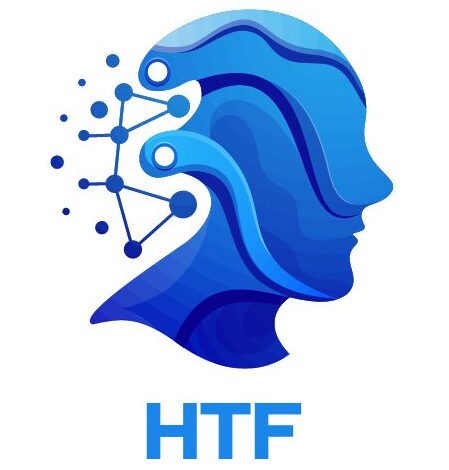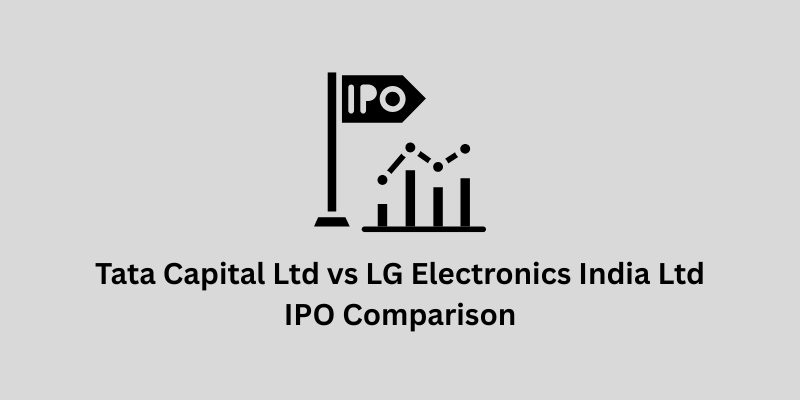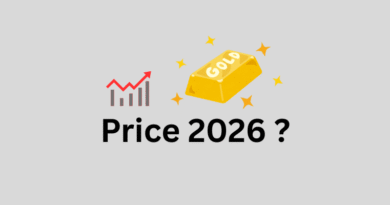Tata Capital Ltd vs LG Electronics India Ltd IPO Comparison: Which Mega IPO Offers More?
Introduction
2025 has become a hotspot for mega IPOs in India, with major names launching massive public offerings to tap retail, institutional, and global investor interest. Among these, Tata Capital Ltd and LG Electronics India Ltd stand out not just for their brands, but also for the structure, valuation, and potential impact of their IPOs. This article provides an ultra-detailed comparison of the two, to help investors understand which one might offer better value, what risks to watch, and how each fits into India’s evolving IPO landscape.
Overview of the Two Companies
| Company | Business Model / Sector | Parent / Promoter | Key Products or Services | Competitive Position |
|---|---|---|---|---|
| Tata Capital Ltd | Non-Bank Financial Company (NBFC) offering credit and financial services: consumer loans, mortgages, business financing etc. | Tata Sons, plus institutional investors like IFC. | Lending & financial services, investment products. Relies on interest income, risk of credit, regulatory norms. | As a Tata group entity, strong brand, wide reach, strong institutional backing. Competes with other NBFCs: Bajaj Finance, Shriram Finance, etc. INDmoney+4Reuters+4The Economic Times+4 |
| LG Electronics India Ltd | Consumer Electronics & Home Appliances manufacturing, distribution; B2C + B2B with after-sales service. | LG Electronics Inc (South Korea) promoter; unit is being listed. | Appliances (refrigerators, washing machines, ACs, other home & entertainment electronics). The Times of India+5Business Today+5India Retailing+5 | Strong market presence, brand recognition, existing manufacturing footprint in India. Faces competition from Samsung, Whirlpool, Havells, etc. Business Today+1 |
IPO Key Terms & Structure Comparison
| Feature | Tata Capital IPO | LG Electronics India IPO |
|---|---|---|
| Issue Size | ~ ₹15,500-15,512 crore in total. Business Standard+2The Economic Times+2 | |
| Price Band | ₹310 – ₹326 per share. The Economic Times+2INDmoney+2 | |
| Fresh Issue vs OFS | Fresh Issue: ~21 crore shares; OFS (Offer for Sale) by promoter & others: ~26.58 crore shares. The Economic Times+1 | |
| Valuation / P/E Ratio | The price band implies P/E ratio of ~33.3x to ~35.1x on diluted EPS FY2025, which is higher than many peers. The Economic Times+2The Financial Express+2 | |
| Listing Date / Subscription Period | Subscription opens Oct 6-8, 2025; listing expected Oct 13, 2025. Reuters+2INDmoney+2 | |
| Lot Size, Minimum Investment | Lot size 46 shares; minimum investment ~ ₹14,996 (depending on price band). INDmoney | Price band ₹1,080-1,140 per share; opens Oct 7-9, 2025, listing tentatively Oct 14. Retail investor minimum depends on lots; lot sizes designed by category (retail, institutional etc.). The Economic Times+4India Today+4The Economic Times+4 |
| Proceeds Usage | Fresh issue proceeds will go to the company: to strengthen Tier-I capital base (regulatory requirement for NBFCs), support lending book growth, meeting expenses etc. OFS part proceeds go to selling shareholders (promoters or IFC etc.). INDmoney+1 | The IPO is entirely an Offer for Sale (OFS) by the promoter (LG Electronics Inc). So the Indian company does not get proceeds; these go to the promoter. Business Today+2India Retailing+2 |
Financials & Growth Potential
Tata Capital
-
As an NBFC, its revenues / interest income and profit have been growing. Reuters etc. report strong anchor investor interest. Business Standard+3Reuters+3The Financial Express+3
-
The proposed fresh equity will help improve regulatory capital ratios (CRAR), which is crucial for NBFCs especially with increasing regulatory scrutiny. INDmoney+1
-
High growth potential leveraging Tata’s brand, TATA group network, access to multiple customer segments, ability to scale further.
LG Electronics India
-
FY 2024 revenue ~ ₹21,352 crore; Year-on-year growth from FY 2023 ~ modest growth (from ~₹19,868 crore) and net profit of ~ ₹1,511 crore in FY 2024. India Retailing+3The Indian Express+3Business Today+3
-
The company is expanding manufacturing footprint: building a third plant in Sri City (Andhra Pradesh) with investment of ~ USD 600 million. Expected to boost capacity, reduce dependence on imports, strengthen “Make in India” credentials. The Economic Times+1
-
The brand is strong, consumer demand for appliances and electronics in India is rising (urbanization, income growth, etc.). But margins can be influenced by raw material costs, competition, supply chain, import duties etc.
Valuation & Investor Returns
-
Valuation Premium: Tata Capital is entering the market with higher P/E than many NBFC peers. That suggests investor expectations are high. But high P/E also means more risk if growth or earnings don’t maintain pace. The Economic Times+1
-
LG Electronics India’s valuation is pegged at around ₹77,400 crore at upper band price. The Economic Times+1
-
For LG, since it is OFS, the company itself won’t get fresh capital; investors are buying into existing equity. That means growth depends on existing operations and efficiency, not on how the proceeds will be invested.
Risks & Challenges
| Risk Factor | Tata Capital | LG Electronics India |
|---|---|---|
| Regulatory & NBFC norms | RBI norms for NBFCs (CRAR, provisioning etc.) are strict and can affect profitability. Increase in NPAs (non-performing assets) is a perennial risk. Economic downturns or credit squeezes hurt NBFCs severely. | Dependence on global supply chains for components, currency risks, competition from both domestic and imported brands. Also consumer demand can be cyclical; slowdowns hurt high-ticket items. |
| Interest Rates / Macro | Rising interest rates increase cost of borrowing; tightening liquidity could pressure margins. Also inflation affects cost of funds and borrowers’ ability to repay. | Inflation, raw material cost increases, energy costs, logistic costs; also regulatory changes (import duties, trade policy) could affect profit margins. |
| Valuation Overhang | With high P/E, expectations are already built in. If growth or earnings miss expectations, there could be sharp corrections. | Since IPO is OFS, value depends heavily on market perception of brand, manufacturing efficiency, and capacity utilization. If expansion costs (e.g. the new plant) overshoot, profit may lag. |
| Competition | NBFC sector is crowded; fintechs, banks entering strong. Pressure on spreads and margins. | Many domestic & global electronics firms competing; also, pricing pressure from unorganized sector and imports. |
Which IPO Might Be More Attractive, & For Whom
-
For Growth-oriented Investors: Tata Capital may offer higher growth potential (if the credit growth, margin, and regulatory compliance hold up), especially since fresh capital is being raised and company is using that for expansion and regulatory cushion.
-
For Income/Brand-value Focused Investors: LG offers a chance to own a stake in a globally known brand in consumer electronics, with strong positioning. If you believe India’s consumption story, rising middle incomes, demand for appliances etc., LG has an appeal.
-
Risk Appetite Matters: Higher valuation in Tata may mean higher risk if growth slows; LG’s OFS means company won’t benefit directly from IPO proceeds (though brand & capacity investments are in progress).
-
Time Horizon: For long-term (3-5 years+), both have potential. Tata’s leverage, loan book growth, regulatory compliance will be milestones. LG’s capacity expansion, margin stability, new plant utilization, global macro (e.g. costs, supply chain) will matter.
Key Numbers Side by Side
| Metric | Tata Capital | LG Electronics India |
|---|---|---|
| IPO Size | ~ ₹15,512 crore Business Standard+2INDmoney+2 | ~ ₹11,607 crore The Economic Times+1 |
| Price Band per Share | ₹310-₹326 The Economic Times+1 | ₹1,080-₹1,140 The Economic Times+1 |
| Valuation Implied / Market Cap | Tata Capital aiming for ~ ₹1.38 trillion market cap. Business Standard | LG India valuated at ~ ₹77,400 crore at upper band. The Economic Times+1 |
| P/E Ratios Compared to Peers | Tata P/E ~ 33.3-35.1x vs industry ~26.6x average. The Economic Times | LG says price band is “optimally priced” based on fundamentals and market sentiment. The Economic Times |
| Use of Proceeds | Tata: fresh issue part to go to company for regulatory capital, expansion etc. INDmoney+1 | LG: OFS only—company doesn’t get IPO money. Business Today+1 |
What Investors Should Consider Before Deciding
-
Due Diligence of Financials
Look at trends: revenue growth, profit growth, NPAs (for Tata), margins, cash flows (for LG), capacity utilization, etc. -
Regulatory & Policy Risks
NBFC regulations, import/export duties, trade policies etc. -
Valuation vs. Realistic Growth
Is the premium being asked justified by expected growth? For Tata, whether credit demand will stay strong; for LG, whether margin pressures can be managed. -
Macro Environment
Interest rates, inflation, consumer demand in India; global supply chain disruptions or inflation affecting electronics manufacturing. -
Liquidity & Lock-in
For OFS, existing shares are being sold—so liquidity for shareholders might be good. But performance post-listing matters. -
Alternate Investments
Compare with other IPOs, or existing stocks in NBFC or electronics/consumer durable sectors. Would your capital be better elsewhere?
Verdict: Which IPO Offers More?
It’s hard to pick a definitive “winner” because it depends heavily on investor profile, risk tolerance, and time horizon:
-
If I were an investor with a higher risk appetite and looking for growth in the financial sector, Tata Capital might be more attractive given its fresh capital usage, regulatory compliance focus, and opportunity to ride credit demand.
-
If I were more conservative, or believe strongly in the consumer spending story in India, LG offers the benefit of brand strength, rising demand for appliances, and manufacturing expansions. Though profitability may be more exposed to cost headwinds, LG has less risk of default/NPA issues compared to a finance company.
-
Also, because LG is an OFS, one must understand you are buying into existing equity rather than fueling new expansion directly.
Conclusion
Both Tata Capital Ltd and LG Electronics India Ltd present compelling opportunities in the IPO market of 2025. They differ significantly in structure, risk, growth potential, and valuation. Your choice will depend on what part of the story you trust more: continuing demand for credit & financial intermediation (Tata) vs rising consumer electronics consumption & brand strength (LG). For savvy investors, spreading risk across both might even be an option.



